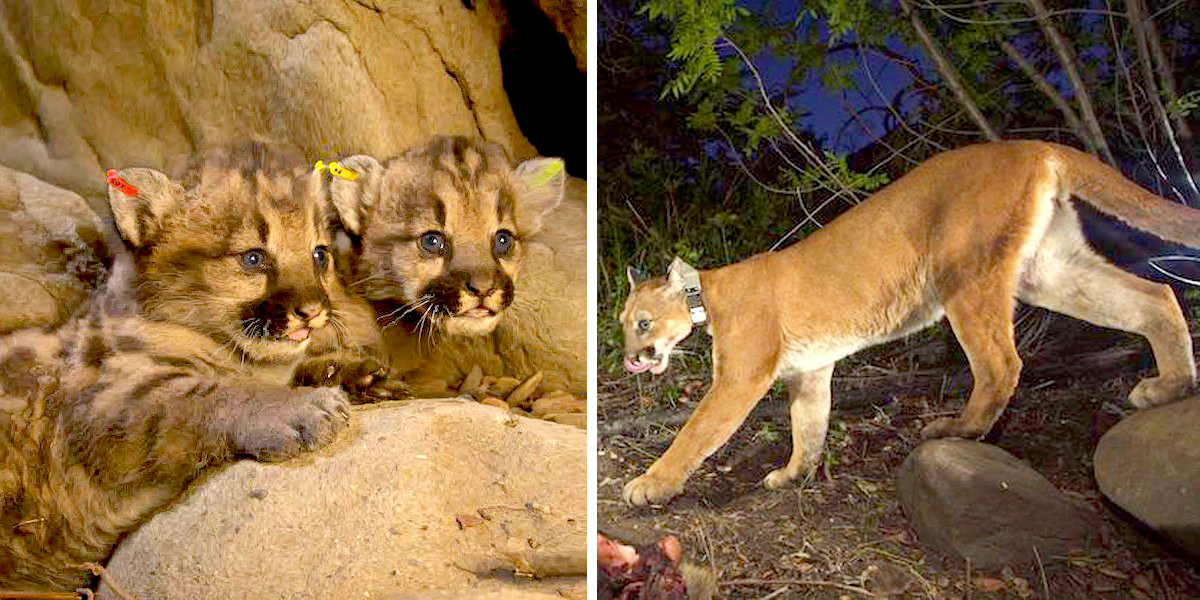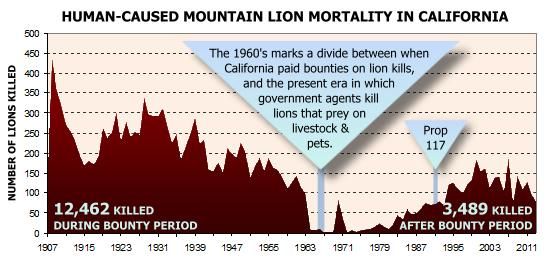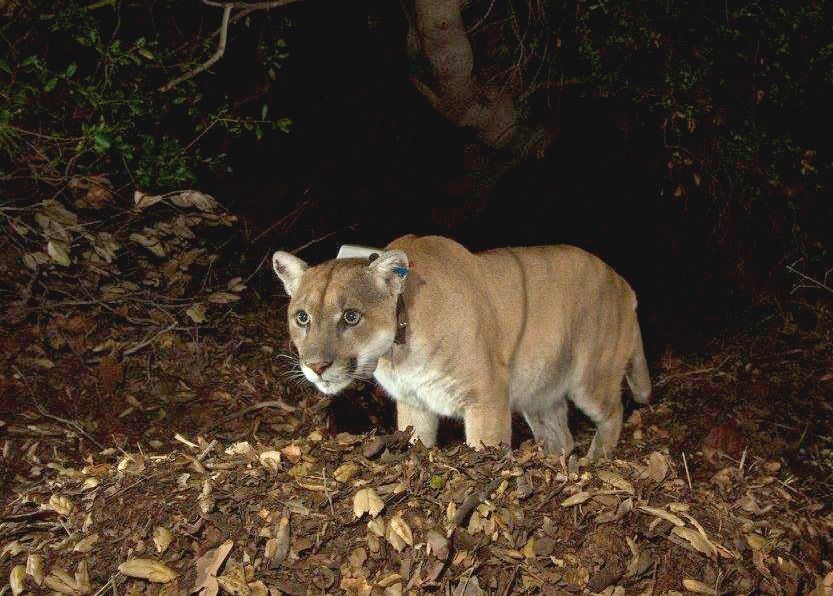
Mountain Lion Mom Killed by Car … Can Wildlife Corridors Help Save the Species?

A female mountain lion with three kittens was struck and killed by a car while crossing the six-lane 118 Freeway near Chatsworth, California on Dec. 3. Her three kittens are not expected to survive, the National Park Service announced Thursday.
The remains of the mountain lion, known as P-39, have not been found, but her radio collar was located in the center divider of the freeway. It likely came off as a result of the impact with the vehicle. Her kittens haven’t been located yet.
P-39 is the thirteenth mountain lion killed since 2002 on Los Angeles county roads.
About 15 of the big cats are known to inhabit the Santa Monica Mountains, which are crisscrossed by freeways and other roads in the highly populated area. The mountain range extends east-west from the Pacific Ocean to the Hollywood Hills in the heart of Los Angeles.
“P-39’s death is a jolting call to action for local and state officials to urgently build the corridors necessary to ensure the safe passage that these majestic cats are entitled to,” said Jean Su of the Center for Biological Diversity.
“People forget that the Santa Monica Mountains are native mountain lion territory,” Su added. “It’s our houses and freeways that have directly infringed upon their homes and natural corridors.”
Prompted by the repeated deaths of these animals while crossing busy roads, wildlife advocates have suggested bridges and tunnels that could act as passageways.The California Department of Transportation (Caltrans) has proposed building a 200-foot long wildlife overpass above the 110 freeway in Agoura Hills.
Separately, the Los Angeles City Council is looking at enacting a wildlife corridor that would require new development to provide access for animals to transit the area. They say it will help to reduce human conflicts.
https://twitter.com/EcoWatch/statuses/648170439739576321 expand=1]
“The recent headlines featuring mountain lions of the Greater Los Angeles area, such as the death of P-39 on the 118 freeway, highlights the tremendous pressure facing these big cats due to lack of connectivity, urbanization and habitat fragmentation,” said documentarian Tony Lee. He is the producer and director of The Cat That Changed America, which tells the captivating story of P-22, perhaps the most famous mountain lion of all time.
[facebook https://www.facebook.com/EcoWatch/videos/1391154537564146/
P-22, who lives in the shadow of the Hollywood sign, wasn’t born there. In search of that territory, which he could call his own, the big, tawny-brown cat had to cross two major freeways and walk through dense urban areas.
However, P-39 wasn’t so lucky. The five-year old had given birth to her second litter earlier this year and had mostly stayed in an undeveloped area north of the 118 freeway. Just days before she was killed, she crossed the freeway for the first time.
Today, there are some 4,000 to 6,000 mountain lions roaming California. They inhabit high mountain forests, coastal chaparral and scrubland. They prefer to avoid humans, but conflicts can occur. There have been 15 verified attacks on people since 1986 in the state, resulting in three fatalities.

Mountain lions are far more likely to be the victims of human actions. At one time, there was a bounty on mountain lions in California. From 1907 to 1963, 12,462 were killed and turned in for the bounty.
But the killing hasn’t stopped. Since 1991, 2,542 cougars have been killed under depredation permits and 947 from other causes including vehicle collisions.
One that just barely escaped a death sentence this year was P-45, suspected of killing 10 alpacas on a ranch north of Malibu. The ranch owner was granted a permit to kill the predator, but has since agreed to work with the California Department of Fish and Wildlife and the National Park Service to either relocate or place the mountain lion in captivity.
Rat poison, which gets into the food chain when homeowners, exterminators and farmers use powerful rodenticides, also threatens the state’s mountain lions. More than three-quarters of the cats in California carry the poison in their systems.
In September 2015, a hiker found P-34 dead in a state park in Southern California. P-34, a female cougar, was the “third case of mortality directly from rodenticide poisoning,” according to the National Park Service.
But increasingly, people are having to get along with wild animals in urban areas, including mountain lions. And in California, attitudes toward the big cats are changing, thanks in part to P-22.

The cat’s home, since at least 2012, has been Griffith Park, an urban park that sees 10 million visitors a year. However, few have ever seen the elusive cougar other than in photos.
Griffith Park encompasses just eight square miles. A male mountain needs as much as a 200-square-mile territory.
Inbreeding among cougars inhabiting the Santa Monica Mountains is threatening their long-term survival. A study released in August gave the big cats a near-zero chance of surviving the next 50 years unless more lions become part of the gene pool.
“P22 lives inside Griffith Park, but he is isolated by freeways on every side and has little chance of ever finding a mate. His plight is changing the way Americans think about wildlife management,” said Lee. “We cannot have mountain lions dying on our freeways when we have the technology and capability to prevent future mortalities. Mountain lions are territorial animals and need large home ranges and open spaces to survive.”

 233k
233k  41k
41k  Subscribe
Subscribe 